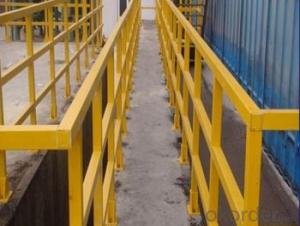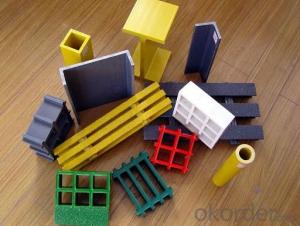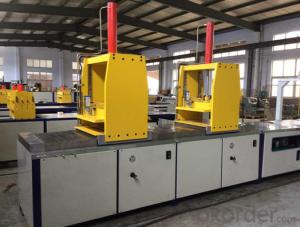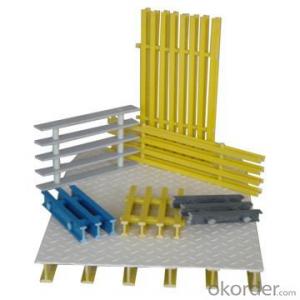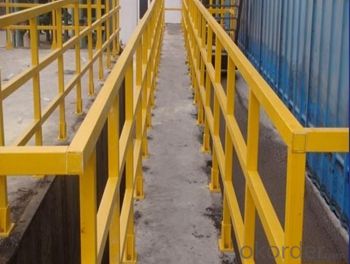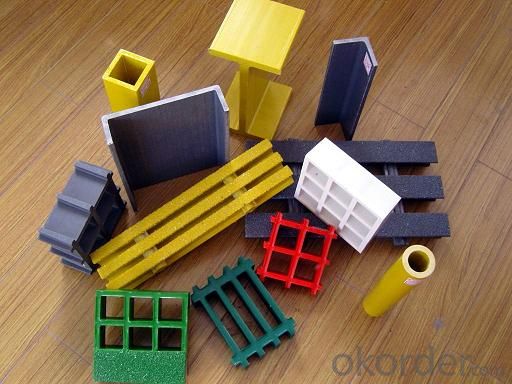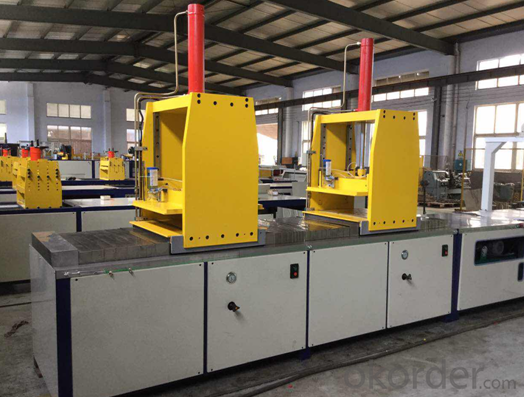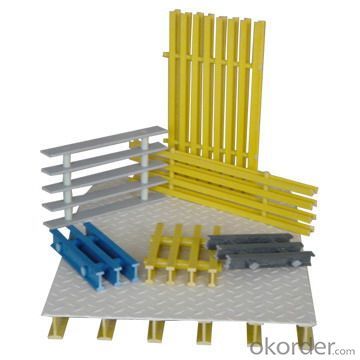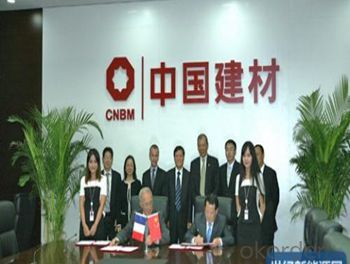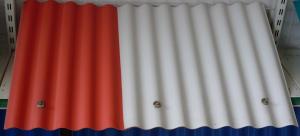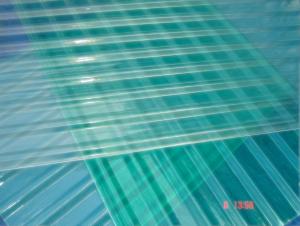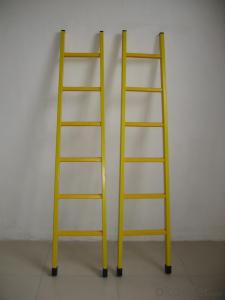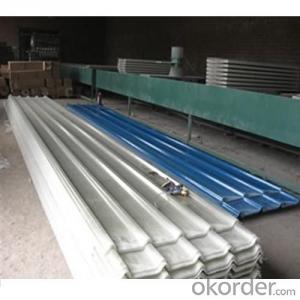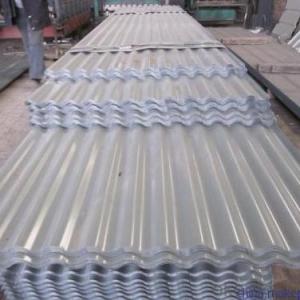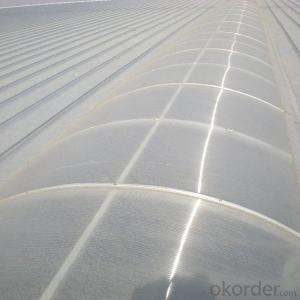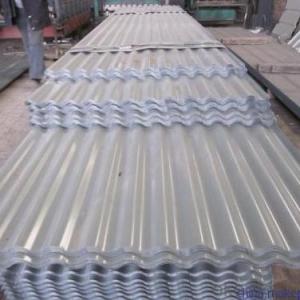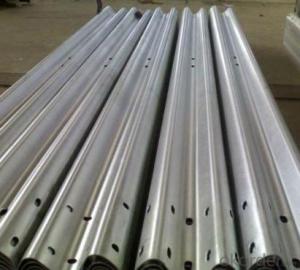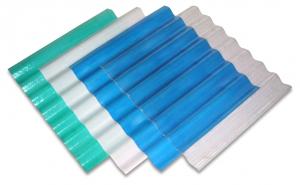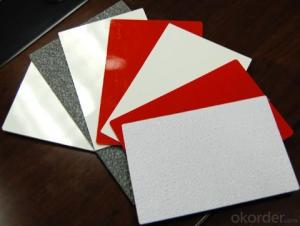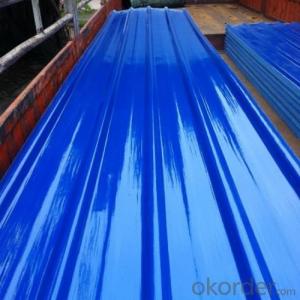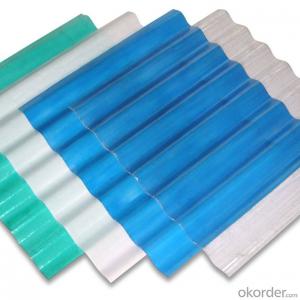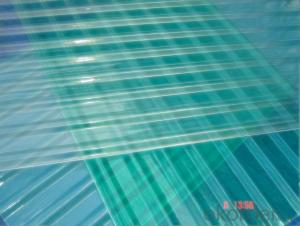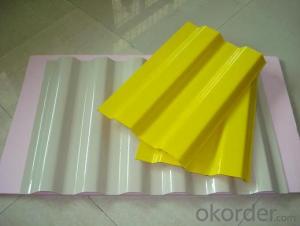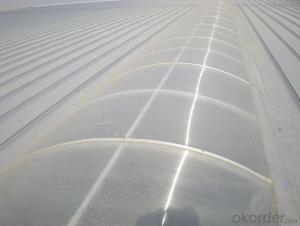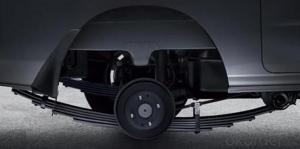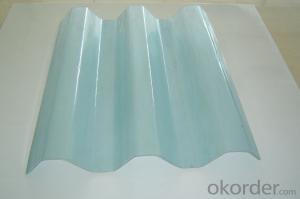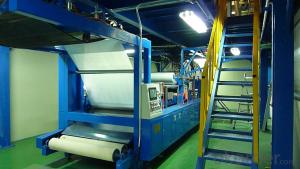FRP Roofing Panel Banisters and Handrails System for Stair Rails
- Loading Port:
- Shanghai
- Payment Terms:
- TT OR LC
- Min Order Qty:
- 50 m
- Supply Capability:
- 80000 m/month
OKorder Service Pledge
OKorder Financial Service
You Might Also Like
Specification
PRODUCT DESCRIPTION
FRP guardrail are made by assembling of FRP pultrusion profiles. They divided into four types, they are standard square type, economic type, standard round type and heighten type, the type of profile and the installation distance, height, position and quantity can be changed per the customer’s requirement, the color also could be selected according the client’s demand.
FEATURES
1) coated with prevent aging layer
2) excellent insulating performance
3) no maintenance
4) high strength
5) long service life
6) easy installaion
SPECIFICATION
Thickness (mm) | Bar width (mm) | Openspace (mm) | Open rate (%) | Approx weight (kg/m 2 ) |
25.4 | 15.2 | 22.8 | 60 | 13.2 |
25.4 | 15.2 | 15.2 | 50 | 15.9 |
25.4 | 15.2 | 10.1 | 40 | 18.5 |
25.4 | 40 | 10.8 | 21 | 14.5 |
38.1 | 15.2 | 22.8 | 60 | 15.8 |
38.1 | 15.2 | 15.2 | 50 | 19.1 |
38.1 | 15.2 | 10.1 | 40 | 22.4 |
50.8 | 25.4 | 25.4 | 50 | 16.6 |
50.8 | 25.4 | 12.7 | 33 | 21.1 |
PICTURES
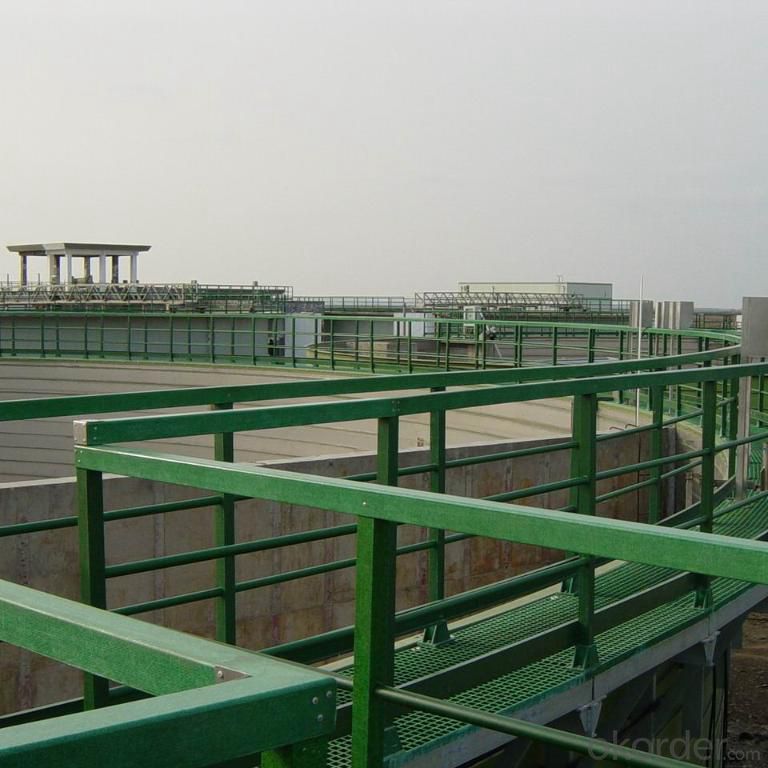
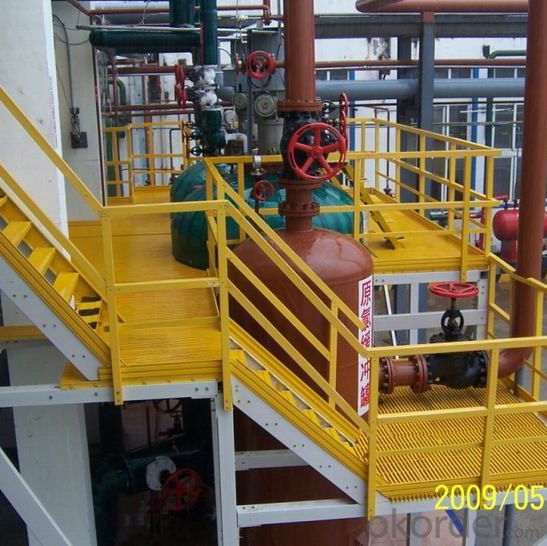
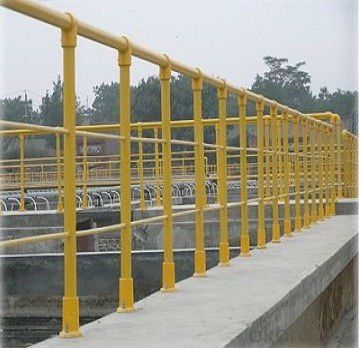
FAQ
Q1.What's your sample policy?
A:We can supply the sample if we have ready parts in stock, but the customers have to pay the courier cost.
Q2.Can you produce according to the samples?
A: Yes, we can produce or modify the products according to your request.
Q3.How do you deliver the goods to my country?
A:We can provide international express, such as DHL, EMS, UPS, FedEx, etc. We select air freight and sea freight upon your requests. Quotations if without mentioning the shipping costs are shipping fee excluded.
Q4.How much does it cost to ship to my country?
A:When you goanna to place an order, please contact us, because different country has different freight.
Q5.How to get the catalogue?
A:please contact us and tell us what you are looking for. We will try our best to meet customers' demands. Welcome you come here to visit us. We sincerely welcome partners around the world to establish business cooperation with us on the basis of mutual trust, benefit and development.
- Q: Can FRP roofing panels be used for skylights or roof windows?
- Yes, FRP (Fiberglass Reinforced Plastic) roofing panels can be used for skylights or roof windows. FRP panels are known for their durability, strength, and resistance to weather and UV rays, making them suitable for various applications, including skylights and roof windows. They are lightweight and easy to install, providing natural light and ventilation to the space below. Additionally, FRP panels can be customized to fit specific sizes and shapes, allowing for flexibility in design. However, it is important to ensure that the FRP panels used for skylights or roof windows are specifically designed and manufactured for such purposes, as they may require additional features like insulation or glazing to meet safety and energy efficiency standards. Therefore, it is recommended to consult with professionals or manufacturers specializing in FRP panels for skylights or roof windows to ensure proper installation and functionality.
- Q: Are FRP roofing panels suitable for recreational vehicles?
- Yes, FRP roofing panels are suitable for recreational vehicles. FRP (Fiberglass Reinforced Plastic) offers several advantages such as durability, lightweight construction, resistance to corrosion, and excellent insulation properties. These qualities make FRP roofing panels a suitable choice for recreational vehicles, as they can withstand various weather conditions and provide thermal comfort for the occupants. Additionally, FRP panels are easy to maintain and can be customized to fit the specific requirements of a recreational vehicle.
- Q: Can FRP roofing panels be used for sheds?
- Yes, FRP roofing panels can be used for sheds. FRP (Fiberglass Reinforced Plastic) roofing panels are lightweight, durable, and have excellent resistance to weathering and UV rays. These qualities make them suitable for sheds as they provide a long-lasting and low-maintenance roofing solution. Additionally, FRP panels are easy to install and offer good insulation properties, making them a practical choice for shed construction.
- Q: Are FRP roofing panels soundproof?
- No, FRP roofing panels are not soundproof. While they may provide some level of sound insulation, they are not designed or manufactured specifically for soundproofing purposes.
- Q: What is the weight capacity of FRP roofing panels?
- The weight capacity of FRP roofing panels can vary depending on the specific product and manufacturer. It is important to consult the product specifications and guidelines provided by the manufacturer to determine the exact weight capacity for a particular FRP roofing panel.
- Q: Can FRP roofing panels be installed on both residential and commercial pergolas?
- Yes, FRP (Fiberglass Reinforced Plastic) roofing panels can be installed on both residential and commercial pergolas. FRP panels are a versatile roofing material that can be used in various settings, including pergolas. They are lightweight, durable, and provide excellent resistance to weather elements such as UV radiation, rain, and wind. Whether it is a residential or commercial pergola, FRP roofing panels offer several advantages. They are easy to install, reducing labor and time costs. Additionally, FRP panels come in different profiles, colors, and patterns, allowing homeowners or businesses to choose a design that matches their preferences or branding. Furthermore, FRP roofing panels provide excellent natural light transmission, reducing the need for artificial lighting during the day. This can be especially beneficial for commercial pergolas used for outdoor seating areas or events, creating a pleasant atmosphere for customers. Overall, FRP roofing panels are a suitable choice for both residential and commercial pergolas due to their durability, aesthetic appeal, and ease of installation.
- Q: Can FRP roofing panels be used for roof extensions or additions?
- FRP roofing panels offer a versatile solution for roof extensions or additions. These panels are lightweight, durable, and corrosion-resistant, making them ideal for a range of roofing needs. By installing FRP panels on existing roofs, one can easily extend or add new sections, enhancing coverage and protection. Moreover, with a variety of colors and designs available, FRP panels allow for aesthetic customization, complementing the existing roof or desired style. However, it is crucial to ensure the structural capacity to support the added weight and follow proper installation techniques for a secure and enduring roof extension or addition.
- Q: Are FRP roofing panels resistant to corrosion from saltwater or chemicals?
- Yes, FRP (Fiberglass Reinforced Plastic) roofing panels are highly resistant to corrosion from saltwater or chemicals. The composition of FRP panels, which includes a combination of fiberglass and resin, provides exceptional durability and resistance to the corrosive effects of saltwater and chemicals. This makes FRP roofing panels a suitable choice for applications in coastal areas or environments with high chemical exposure.
- Q: Can FRP roofing panels be used for both interior and exterior applications?
- Both interior and exterior applications can indeed make use of FRP (Fiberglass Reinforced Plastic) roofing panels. These panels possess great versatility and can be applied in a variety of settings, including residential, commercial, and industrial spaces. For exterior purposes, FRP roofing panels are commonly utilized in roofing systems for buildings, garages, sheds, and other structures. They are renowned for their durability, resistance to weather, and ability to withstand harsh environmental conditions such as extreme temperatures, UV radiation, and moisture. Moreover, FRP panels are lightweight, making installation a more convenient and simple process. In terms of interior applications, FRP roofing panels are often employed in areas that require a high level of resistance to moisture, such as bathrooms, kitchens, and swimming pool enclosures. These panels are resistant to moisture and do not support the growth of mold or mildew, making them particularly suitable for environments with high levels of humidity. They are also easy to clean and maintain, which is of great importance for areas prone to spills or stains. Furthermore, FRP roofing panels can be utilized in both vertical and horizontal applications. They can be installed as wall cladding or partitions, providing a durable and aesthetically pleasing solution. With a wide range of colors, finishes, and textures available, FRP panels can be customized to meet specific design requirements, ultimately enhancing the overall appearance of the interior or exterior space. However, it is crucial to note that the selection of FRP roofing panels should be based on the specific requirements of the intended application. Factors such as load-bearing capacity, fire resistance, and intended use must be taken into consideration to ensure that the panels are suitable for the intended purpose. It is advisable to consult with a professional or manufacturer to determine the appropriate FRP roofing panels for a particular project.
- Q: Can FRP roofing panels be used in coastal areas?
- FRP roofing panels are suitable for use in coastal areas. They possess remarkable durability and can withstand severe weather conditions, such as saltwater exposure and high humidity levels. One of the advantages of these panels is their non-corrosive nature, as they do not rust. This makes them an optimal selection for coastal regions, where conventional roofing materials may rapidly deteriorate due to the presence of saltwater air and moisture. Moreover, FRP panels are lightweight, simple to install, and demand minimal upkeep. Consequently, they provide a practical and cost-efficient roofing solution for coastal areas.
Send your message to us
FRP Roofing Panel Banisters and Handrails System for Stair Rails
- Loading Port:
- Shanghai
- Payment Terms:
- TT OR LC
- Min Order Qty:
- 50 m
- Supply Capability:
- 80000 m/month
OKorder Service Pledge
OKorder Financial Service
Similar products
Hot products
Hot Searches
Related keywords
